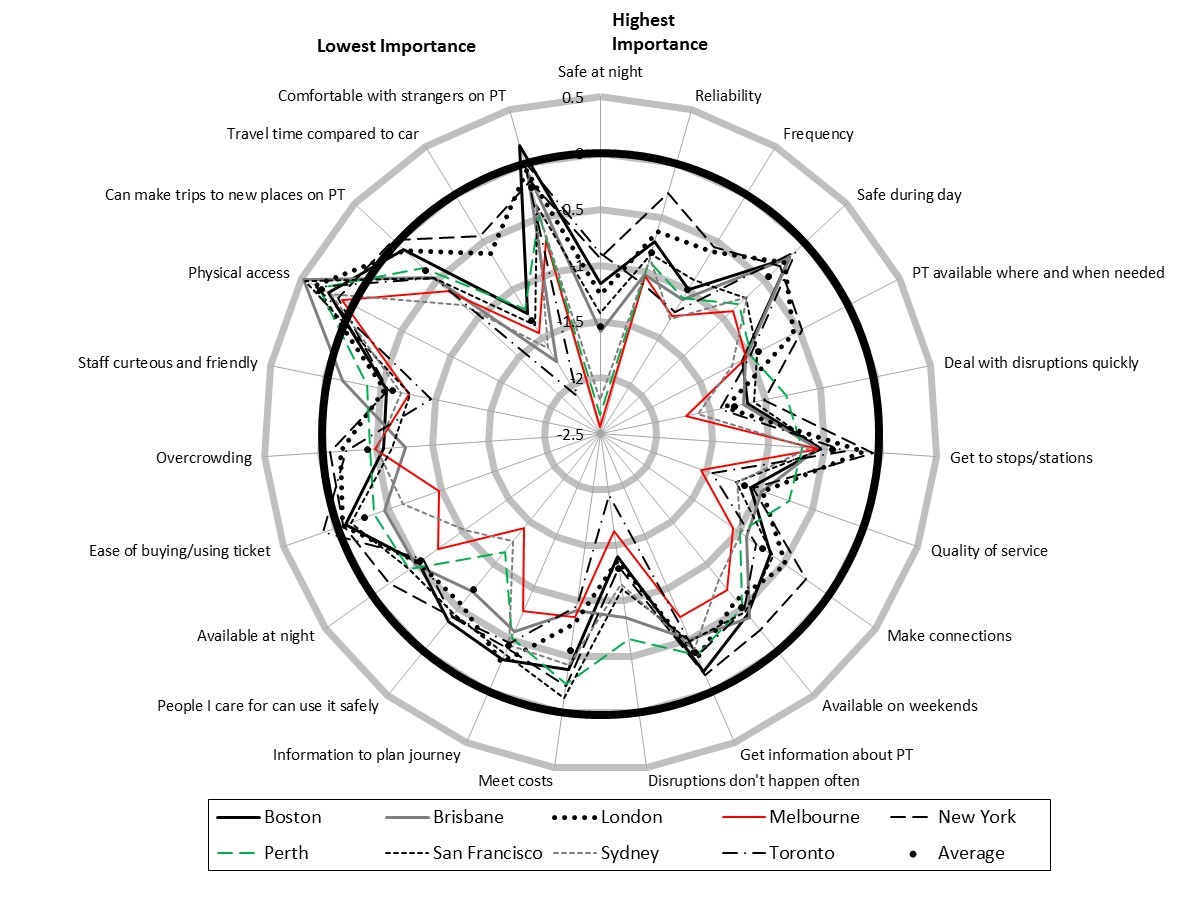Objectives
- To develop a method for comparing perceptions of public transport service attributes across different customer groups
- To apply the method in different world cities to measure relative performance and importance of different public transport service attributes
- To explore how to efficiently illustrate findings between cities when many attributes are included.
Method
- Literature review to identify key service attributes of importance to difference public transport customer groups
- International survey of public transport users in nine cities to measure performance and importance of 22 public transport attributes
- Spiral plot analysis to efficiently illustrate gaps between performance and importance ratings.
Key results
Performance falls below expectations for almost all public transport service attributes in each city.
Fig. 1 Difference between performance and importance of public transport attributes
Note: Solid circle line is where importance and performance scores are equal; scores below this have performance below importance and scores above it have performance above importance.
Source: Currie & Delbosc (2015)
- Melbourne generally has the lowest scores all of cities, indicating the largest gaps between performance and expectations in public transport service attributes; New York tends to have the smallest gaps
- Negative gaps between performance and importance of public transport service attributes are highest for ‘safe at night’, ‘disruptions don’t happen often’ and ‘travel time compared to car’
- Spiral plot analysis provides a powerful means of understanding relative performance between cities and gaps in performance and expectations of public transport service attributes.
Research Papers
Currie, G. & Delbosc, A. (2015) Spiral Plot Analysis of Variation in Perceptions of Urban Public Transport Performance Between International Cities. Transportation Research Record: Journal of the Transportation Research Board, No. 2538, pp. 54-64.

